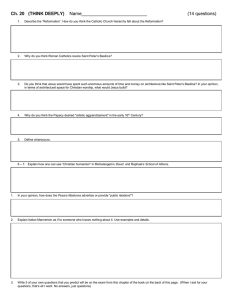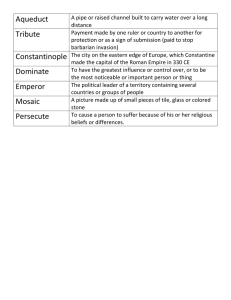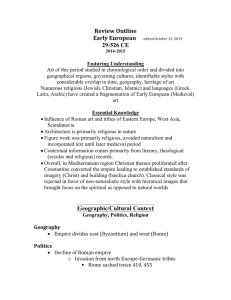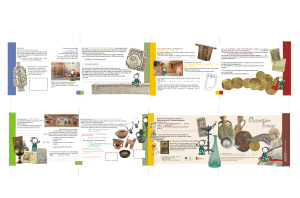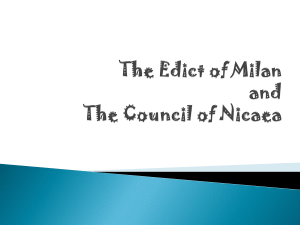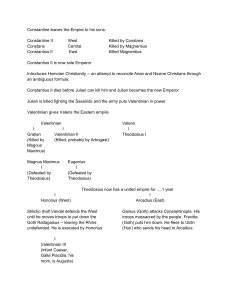Jewish.doc
advertisement
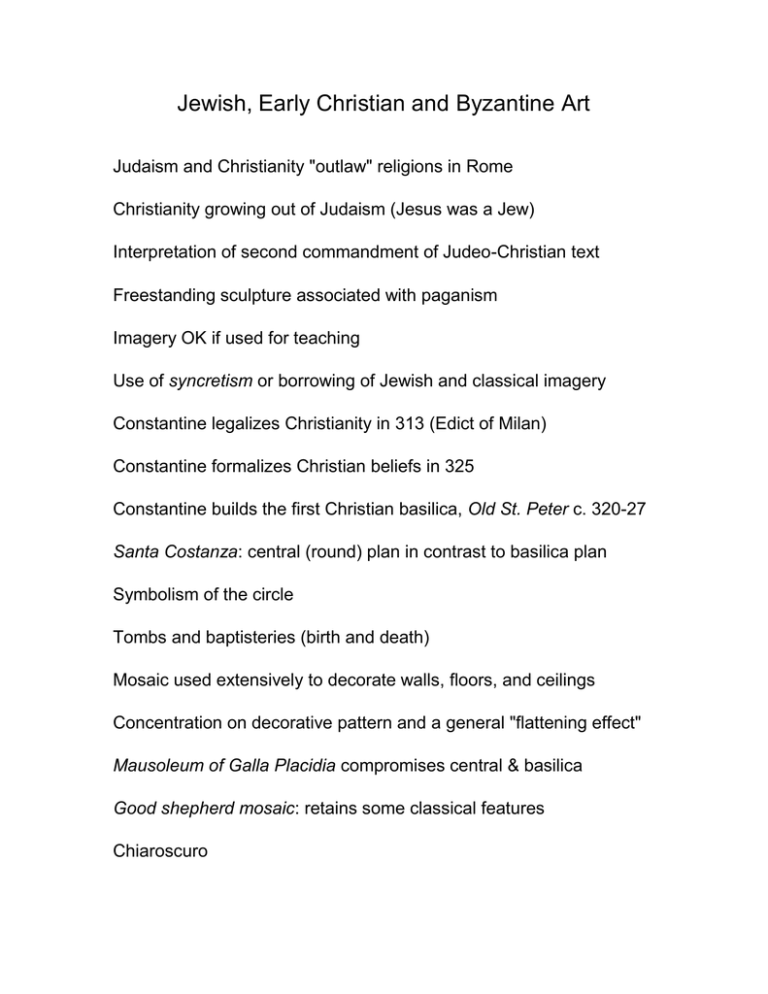
Jewish, Early Christian and Byzantine Art Judaism and Christianity "outlaw" religions in Rome Christianity growing out of Judaism (Jesus was a Jew) Interpretation of second commandment of Judeo-Christian text Freestanding sculpture associated with paganism Imagery OK if used for teaching Use of syncretism or borrowing of Jewish and classical imagery Constantine legalizes Christianity in 313 (Edict of Milan) Constantine formalizes Christian beliefs in 325 Constantine builds the first Christian basilica, Old St. Peter c. 320-27 Santa Costanza: central (round) plan in contrast to basilica plan Symbolism of the circle Tombs and baptisteries (birth and death) Mosaic used extensively to decorate walls, floors, and ceilings Concentration on decorative pattern and a general "flattening effect" Mausoleum of Galla Placidia compromises central & basilica Good shepherd mosaic: retains some classical features Chiaroscuro Tilted up ground plane Shadows Byzantine Art: Theocracy, Justinian secular & religious ruler Hagia Sophia: use of pendentives, slightly larger than Pantheon San Vitale: polygonal, simple outside, enriched inside (metaphor) Apse with radiating chapels Extensive use of mosaics Late Byzantine architecture: emphasis of the cupola (drum/dome) Icon paintings

![WALKER APAH Work 1: [left] Christ as the Good Shepherd, mosaic](http://s3.studylib.net/store/data/008199063_1-917d961612a5fa9b320b28077d9ae06b-300x300.png)
